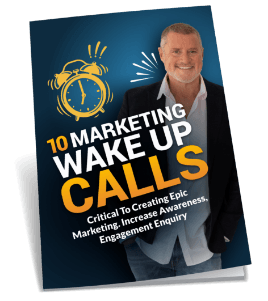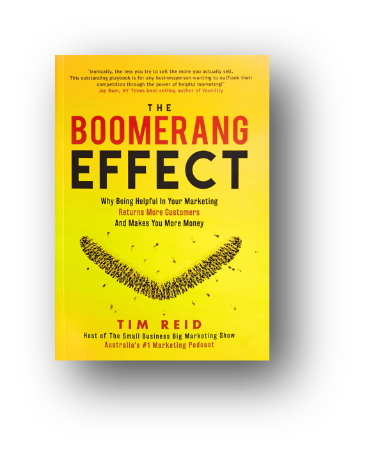Jen Geale owns Australia’s largest and most unconventional mountain bike store with her husband Michael and another married couple … with a turnover in excess of ten million dollars a year … and she’s done it all from the comfort of her own home whilst offering exceptional customer service.
“I know deep down that if we worked 80-hours a week we would grow our business just that little bit more., We would make more money. We would be that little further ahead. But we’ve all made a conscious decision that that’s not what we want.”
-Jen Geale,
Mountain Bikes Direct

There’s loads more tips and insights just like this that will help you build that beautiful business of yours into the empire it deserves to be. Hit the PLAY button above to listen now, or subscribe free to hear the full interview. You’ll also find the full interview transcription below.
If you have questions about how to successfully run an unconventional online store then you’ll get this answers in this interview, including:
- Why did Mountain Bikes Direct close their bricks and mortar store?
- Why does being online offer so much flexibility?
- What was the point when the online business really took off?
- What’s the most effective marketing for Mountain Bikes DIrect?
- What technology is critical in running an online store?
- And plenty more …
A little more about today’s guest, Mountain Bike Direct’s Jen Geale:
Jen Geale owns Mountain Bikes Direct, Australia’s largest selection of mountain biking gear. She owns it with her husband Michael and two other business partners (also married to each other). She was named by Internet Retailing magazine as one of Australia’s top eCommerce superstars for 2018, and in 2017 was a Telstra Business Award winner, and was included in Smart Company’s Hot 30 Under 30 Awards. During our chat we cover everything from how she built Mountain Bikes Direct to an 8-figure annual turnover, her secret to amazing customer service (when they don’t even have a phone number to call!), how to work with your spouse and of course, what marketing is really working for them.
Here’s what caught my attention from my chat with Mountain Bike Direct’s Jen Geale:
- I love how Jen’s challenging the way business gets done. No office. Staff all over the place. No phone number. Yet it all works.
- I love how she shares the content creation around amongst her staff. And specifically how she has them rewrite the product descriptions and reviews, instead of just going with what the manufacturer provides, which is often dull and boring.
- And I love how a key criteria for introducing new ideas and systems in to the business is to ask the question “Will this lead to a superior customer experience?”
Jen Geale Interview Transcription
Jen
Yeah. It’s a really great question and one that is fun to address because a lot of the stuff that we do we’ve just started to take for granted and we don’t think of as unconventional. So for example the one that always gets people is that we don’t have an office. We have a team of 14 people now and everybody is working remotely. Everybody’s working from home and they’re in locations all across Australia. We’ve got southeast Queensland covered we’ve got Sydney Canberra Melbourne one guy in Mount Beauty in regional Victoria. We’ve even got one of our longest serving employees in Colorado in the States.
Tim
Every single one of these employees is a mountain bike enthusiast and they get to live and work. They get to live at home of course. They work from home and they’re close to mountain biking tracks.
Jen
Yeah. And that’s actually a really massive part of it. The guy I mentioned who is in Mount Beauty he was from Canberra and when he joined us he was in Canberra and had a job there and he worked for us for about six months and then he said Oh yeah I’m thinking of relocating I want to move closer to the trails because hey with this job that I’ve got I can live anywhere so why not live near mountain bike trails and I was stoked to hear that. To think that he was so happy in his job to do that but to also be able to actually enable that for people is yeah a pretty awesome feeling.
Tim
What kind of freedom then do you give these 14 people who live all over Australia if not the world. Can they go, if I know the guy who owns Patagonia. Wonderful outdoor brand. He’s written a book and the title of that book is Let My People Go Surfing. And his view is hey if the swells up go and surf you’ll be a better person.
Jen
Yeah definitely. The majority of our team are focused on customer service. What we try to say is you’re on for these particular hours this is when we expect you on but we don’t need you at all outside of that time. I don’t want to hear from you. Don’t check your e-mails don’t check your messages. I will not call you go ride go spend time with your family go enjoy life. We’re very strict on not doing overtime because we want 100 percent of people when they’re working and we don’t want to hear from them outside that. We want them to go and enjoy life.
Tim
You are brutal like that I mean trying to get hold of you for this interview and previous radio interview that we did. First up here I get a little bit frustrated by that but I’m in absolute awe. I don’t have the ability to completely switch off and I know a lot of people listening don’t take me further inside that mindset.
Jen
Yeah that has been very much a work in progress and possibly hindered in the early stage by the fact that our business is run by two married couples. I’m in business with my husband and I’ve been in business with my husband for a very long time. And in the early days of doing that you find that you are thinking about and talking about business and work all of the time. You’re at work you’re talking about work. Over dinner you’re talking about work when they’re supposed to be just relaxing or going for a ride together and suddenly talking about work. And we did get to a stage where we know we need really hard boundaries because we need to have something else in common. It’s not work and particularly when we had kids as well we wanted to make sure that we weren’t constantly talking and thinking work when we were supposed to be spending time with them. So we basically just said we clock on for work and we clock off and we really try not to talk about it outside of that. So both being committed to that approach I think has helped us to be really kind of vigilant about it and then we’ve prioritized personally making sure that we do get out for a ride. We can’t be talking about and living and breathing mountain biking all the time but not having a chance to actually get out ourselves that’s not where we want to be. I know deep down that if we worked 80 hours maybe we would grow our business a little bit faster maybe we would be that little bit further ahead but we’ve all made a conscious decision that’s not what we want. It’s not worth it.
Tim
And Jen just finished that the decision to switch off and not check emails not do anything around work. Was there anxiety around that when you first did it but I’m guessing I’m hoping over the course of days weeks months you realise that things, everything still running the world continues to spin.
Jen
That’s it. That’s it that when you step away from stuff you realise that there’s only a very small handful of things that really are mission critical. I don’t know if you’ve tried to reach me on email but if you had you know 50 percent of the time you’ll get I’m out of office and it doesn’t mean that I’m on holidays or that I’m out of the office. Often I activate my out of office to tell people that I’m in meetings or that I’ve got what’s happening at the moment and I am going to take a little bit of time to get back to them and I love that too because then I know that they know that I’m not going to respond in the next five minutes. And so I’ve got a little bit of breathing space to just tackle the stuff that’s really genuinely important and not just be totally on the back foot all the time in responding to people when they need you to respond. So yeah things like that have become part of how I work and how we work and it’s good for you it’s good for mental health.
Tim
No doubt about it. Basically what you’re doing to walk into bit of your own drum and you are actually doing business like business used to be done. We are having this chat with one of my sons just the other day where there’s this kind of norm which has become acceptable that if you haven’t got to return from a text or an email within 5 10 15 minutes it’s like where are these people. What’s going on. Why are they taking so long.
Jen
Absolutely. And you know people are trying to live their lives. At the end of the day we’re in business for lots of different reasons but part of it is to have some level of control over what you do why you do it and why you do it and when you do it and if constantly just being responsive like that and reacting to what people are pushing on you. You’ve lost that control.
Tim
Let’s keep talking about the unconventional nature of the business. 14 people working from home I understand that you haven’t met every single one of your staff members.
Jen
Yes. Actually we’re at the point where I haven’t met the majority of our staff members. Isnt that weird.
Tim
Have you spoken to them all right?
Jen
Yes. Yes I have actually. We have three new people starting this week and aside from interviewing them I haven’t spoken with them yet but that’s something that we’re looking to address. So I think as we grow. On the one hand it’s kind of novel that we haven’t all met each other and we do a lot to try and foster that team environment sort of virtually as much as we can. But I think there’s definitely going to be something said for getting together face to face probably around some mountain bike trails and that’s something I think we’ll be looking to introduce into our team dynamic.
Tim
How do you foster the team environment virtually?
Jen
We used a tool called slack. So slack is for sort of an instant messaging platform. And what you can do in Slack is you invite everybody into that space and you have different channels where you can discuss different topics basically so a channel is sort of a cluster of discussion around the topic. We use it for functional discussions so we discuss certain issues that have come up or if the team need to ask a specific technical question of each other and have a bit of a discussion we have it there but we also have a couple of channels that are dedicated to the kind of water cooler banter that we don’t otherwise have and we make sure that there is some discussion flowing there so people are sharing funny pictures that they’ve seen or stories about their ride this morning. Those kinds of things and we make sure to allow a little bit of space and we’re not sort of cracking the whip saying everybody get back to work. That camaraderie is quite important particularly when we are all virtual.
Tim
What’s your staff retention rate?
Jen
For the last couple of years, we have had nobody leave which is great and because we have been growing we’ve been bringing on more and more staff. So yes it’s been really positive and we do try and also check in with everybody just to see how they’re going. Because you’re not seeing them. So there’s definitely that risk that they might be really unhappy and you don’t see it. Picking up on people’s electronic communication or lack thereof is not necessarily a great marker. So in that sort of spate of new people that we’ve just brought in. We have brought in someone in about last month or so to focus on our people and our H.R.
Tim
H.R. manager you are getting big.
Jen
We got a H.R. person isn’t that exciting.
Tim
Where are they? Are they local?
Jen:
She is in Brisbane area which spends a lot of time back and forth in Tasmania.
Tim
Of course, she does.
Jen
A lot of mountain biking in Tasmania so she’s great. She’s a rider and her role is going to be just checking in with the team and making sure that we’re growing we’re not sort of losing people in that mix because we know that’s one of our massive strengths because we can hire absolute mountain bike experts no matter where they are based and where they live no matter what time zone they’re on. We can make use of that but at the same time that geographic spread definitely has its risks and we want to do the right thing by the people that work for us.
Tim
Let’s talk about your unconventional approach to customer service. Young Jen you have no phone number at all. If I buy a 2000-dollar mountain bike from Mountain Bikes Direct or whatever I cannot renew.
Jen
Yes. Now it hasn’t always been that way. We did have a phone number back in the day and we found that the sorts of inquiries that were coming through the phones were particular types of customers with particular types of queries. A lot of the time it told us that we needed to be clearer on our website about certain information like we could have saved everybody a phone call. So we addressed some of those thing. We shouldn’t have people ringing up to find out how to return something or ringing up to find out how much shipping will cost. That’s on us to improve our website and our communication. So we did a lot of those things then we also found that people were ringing up just to see if somebody answered the phone. They just wanted to know that we were legitimate that we weren’t just sort of fake website up to take their money. So again we did a lot of work around our branding and positioning so that they could see that we’re real people. So if you go to our Web site now you’ll see my face and my co-founders on the front page. And that’s not an effort to put our faces everywhere. That’s quite strategic. That’s to say that we are actually real people. Here we are. The real flesh and blood people behind this business and if you trust us with your money if you make purchases with us. We’re right here and we’re real people and you don’t need to call us to find that out.
Tim
I think there’s some great learnings there. I got your home page in front of me and I look at this and there’s just a whole lot of trust signals that make me go. Yep no worries you’ve got everything from free delivery over ninety-nine dollars. A picture of you. A Telstra Business Award winner. The one I really like and I know a lot of businesses are using this these days. Every business should have it on is the live chat now. When I was trying to get you for the original radio interview those few months ago you’re not returning my calls but mind you had you had been in Japan. I went to the can we help button in the bottom left hand corner I thought okay this is my last resort. Will someone respond and I just said hey it’s Tim here I’d need Jen for a radio interview and a guy came back to me within. I can tell you less than 60 seconds at quarter to nine in the morning.
Jen
Yes yeah absolutely. So we have live chat from about six o’clock in the morning now through till 11 o’clock at night seven days a week. Which sounds massive but we’re able to do that by just having a spread of people working at different times. Again that having everybody working remotely so I don’t have people traipsing into an office at 6 o’clock in the morning and then at 11 o’clock at night. Andrew who’s in Colorado is just working in his afternoons but he’s providing that really early customer service which is really great. So yeah people can jump on with any sort of query and they get that immediate response and we find that for a lot of people that actually works better than phone and is more convenient. It helps us too because the way life chat works we can see what page they’re looking at. We can share links we can say Oh I’d recommend this particular for you and here’s the link. So the person can go straight to it rather than being on the Web site and say okay just up at the top left there you click on not one thing. So live chat for an e-commerce business like us is really powerful. What I would say about it is that we implemented it years ago and we implemented it far too early and when we didn’t have the resources to do it properly. So we implemented it when we had one or two people in the business doing absolutely everything and they were answering the phones and they were doing the emails and all of that kind of stuff. And so we just found that life chat was constantly left off. The only thing I would say about implementing it is just making sure that you actually do have the resources. The human resources to sit behind it. And if you don’t that you’re using live chat in a way that it’s quite clear that there is or isn’t a real person there at that particular moment. So it can still be quite a useful channel as long as people know that there’s not a real person here but you will get a response.
Tim
Our artificial intelligence is going to change that too. It’s looking at keywords in live chats and e-mails and responding accordingly. Are you guys looking into that.
Jen
Yeah. We have been definitely and I think it’s something that we will integrate to a certain extent. What we’re looking at though is how we do that in a way that’s still authentic with our brand. What we have positioned ourselves on is that you’re talking to mountain bike experts. You’re talking to real people who are passionate about mountain bikes. I think there is a space for ai to help customers get through certain questions but we’re going to need to make it really clear that they are talking to a bot. We want to be really transparent about that. We want to give them really clear out to talk to a real person and we only want to be using ai where it is providing a superior experience to the customer. We don’t want to be using ai just to save us a bit of money in human resourcing. We want to make sure that we’re only using it where the bot can get a quicker answer or make a change to an order or do all those sorts of things in sort of split seconds at a much much faster and better experience for the customer.
Tim
What are the other trust signals you’ve got on your website Jen. I don’t see enough Google reviews and you’ve got it at bottom right hand corner four point nine five stars I’ve clicked on it you’ve got 1371 reviews. What’s your secret to encouraging people to go to the trouble.
Jen
That was actually an interesting one. As far as I’m aware you really can’t incentivize people to place a google reviews. So the way that those reviews work is they’re the ones that are post purchase. So we have that set up on our Web site and Google’s got fairly strict kind of control over that. If you buy something, once you get to the order confirmation page, after check out, little pop up comes up from Google and says would you opt in to receive a review request once you received your order. So it’s a purely opt in process and obviously a lot of customers do opt in. And then a couple weeks after they order they’ll get an e-mail from Google it’s not from us asking them to rate their experience. So I think it’s just about providing review worthy experience.
Tim
Correct. The best marketing is a great product or service as we continue to say let’s get back to the unconventional nature of mountain bikes direct Jen. What else are you doing that’s a bit wacko?
Jen
Oh gosh I think that they’re probably the main things. The other thing that is perhaps peculiar to our industry is not having a physical presence at all. Far as I’m aware we’re the only cycling retailer of any sort in Australia that does not have a shopfront at all.
Tim
And you did have one.
Jen
We did. So we started in physical retail. My husband Michael and his business partner, his mate at the time Tim started a physical bike. They were in high school looking for parts themselves and then selling them to mates and all of a sudden, they realised they had an opportunity here so they set up a physical box store and ran that for quite a long time and the transition into e-commerce was about seeing a different sort of space where we wanted to be involved. So we ran those two businesses so they were different business names but selling very similar product but to a slightly different demographic and we ran those in parallel for a couple of years but for a number of reasons we decided to sell the physical store and just focus on being purely online. But for whatever reason that’s peculiar in the cycling industry and peculiar in a lot of industries to have no physical touch point with customers. From our point of view, it hasn’t hurt us. And we’re serving customers who don’t have access to a local box store. So if we had a physical location in Sydney for example that wouldn’t help 98 per cent of our customers.
Tim
There’s a little bit of a trend. There’s a business down in Byron Spell and the gypsy collective which is a fashion retailer. Now they do 20 million bucks a year online but they have one retail outlet flagship store in Byron Bay that people from all over the world sort of travel to because it’s an experience. A big idea for mountain bikes direct. Would you consider down the track, creating some kind of mountain bike show room museum gallery experience concept store. You would?
Jen
I think there’s opportunities to have physical contact with your customers. I think if we were to look at something like this we would probably be reluctant to pick a specific location because in some way it be pretty arbitrary. I’ve seen some brands there are some cycling brands who’ve done it who do more kind of roadshow style. They get a really big trucks loaded up with bikes and drive around the country and do demo days and that kind of thing. That sort of experience where you give customers the opportunity to interact with you and you give different customers the opportunity to interact with you in different locations. That probably resonates with me a little bit more also because of the types of products that we sell. We are predominantly a reseller so we’re not really trying to drive that hype around our designs or our particular products. It’s more about a channel for people. I think for that to be viable for us, we probably need something where we are really trying to drive hype around us and what we’ve created.
Tim
Jen. Tell us about the turning point when Mountain Bikes Direct, you look Michael in the eye lovingly and say hey we’re onto something here. Can you remember what happened? What lever did you pull?
Jen
We went through a stage where that wasn’t the conversations we were having. We went through a stage after about 18 months of running the business where we said. I swear this is a good idea. This is such a good idea that I’m not seeing profit at the end of it something’s gone awry here. Something is not matching my back of the napkin calculations. What’s going wrong and we all sat down as a team and we got really brutal I guess on the business and what we were doing and in particular what we were spending money on and we gave ourselves pretty strict ultimatum. We said that if we couldn’t get the business breaking even every single month for six months and then six months after that we weren’t meeting a certain net profit over sales target that we would wind up the business. That we would just liquidate the stock. We’d wind it up because we given it an absolute red hot go and it wasn’t working. So at that point in time we cut absolutely all expenditure. We did no paid advertising. We got rid of every software platform that we couldn’t say was absolutely mission critical. We just got really really tight. We stopped sort of experimenting with different lines of stock. We narrowed the stock we were carrying we did lots of things. And as it turns out within that first six months we’d achieved our second target. We achieved our 12 month target and we’ve been making a profit every month since.
Tim
You just got smarter. You got more efficient you got rid of the fat.
Jen
That it. We weren’t complacent I guess up until that point. I think what we’d been doing up until that point was we’d been just being pulled between these two sometimes opposing goals of pursuing growth and pursuing profit. So on the one hand we wanted a profitable business because we had no interest in building a massive empire that wasn’t making money day to day but on the other hand we were thinking but we need to get bigger. Our competitors are getting bigger and we need a bigger slice of that pie. If we can get a bigger customer base and make more sales then we’ll make money. This constant tension and so in practice what that means is that you go out and you implement this fancy piece of software because it’s going to help you acquire new customers but all I’ve done there is a road into my profit and then I don’t really have time or capacity to implement that software properly. So I’ve just wasted money on that software and I’m not acquiring new customers and it’s this sort of death spiral if you’re not careful. And it was only because we sat down together and said what are we doing here this is our last chance that all of that stuff all of that fat just had to go through and we had to get the absolute barebones of the model to prove to ourselves that it really really worked and that we could repeat it month in month out. Once we could do that then we’ve been able to establish a foundation on which to profitably grow. So we had to make a mindset shift that first came building a profitable model and until we could establish that we didn’t have permission. We didn’t give ourselves permission to try and grow.
Tim
With those discussions at that time. I think it was about three years ago when you did look each other in the eye and go. This ain’t workin like the kind of back in the napkin set it would work. And there must be other times in the business where you just want to scream at your business partner or business partners. One of them is your husband. The other two I’m guessing are quite good friends who are also married. How do you manage that and retain a happy household?
Jen
It’s something I do get asked. People say Wow do you recommend going into business with your spouse and your best friends and I say absolutely not. I can’t in all good conscience recommend that because our business relationships are amazing and they work. And as far as I know nobody takes anything personally. How that works. I can’t really tell you. I can’t say why. I think there’s just a lot of established trust there. One thing we do practically though is that we have a really clear sense of who is responsible for what. We are very straight talk as with each other. So if somebody has an idea and the rest of us think it’s a bit rubbish we’ll say so but at the end of the day if that person is responsible for that part of the business. So for example if it’s a marketing effort that falls under my remit and if I say no look I’m really passionate about giving this a go. Then the rest of the team even if they think it’s a terrible idea will generally give me mandate to do it. If it succeeds we all go. That’s awesome. Didn’t think it was going to succeed. That’s great. If it fails we all go oh yeah okay cool well let’s not do that again and that’s it. We’ve got a really healthy relationship in that sense where nobody holds anything over other people. We look at our mistakes we say that was a screw up let’s all move on. We have to talk about it because we’ve all made monumental costly screw up but we don’t talk about them and we don’t think about and we don’t dwell on them.
Tim
Do you want to just tell me one? What was one monumental error that you made?
Jen
I think my screw ups have been taking on contractors and I can’t be too specific but taking on different providers and software systems all that kind of stuff where I think this is going to be great and then sort of six months down the track here. That wasn’t really great. And if you were to tally up how much you spent on that it would be shameful how much money has been spent on that but nobody asks. Nobody says how much did we spend on that. We all just go. All right. Well let’s cancel that contract because we’re all very present and future focused and that helps a lot.
Tim
You are head of marketing at Mountain Bikes Direct. We’ve talked about great service great product you’re ticking all those boxes. What is the most effective marketing beyond that you’ve done to attract new customers into the business?
Jen
It’s interesting just drawing from our previous conversation. The one of the most effective mechanisms we’ve had to date for bringing in new customers is actually one of those harebrained ideas that most of the team went. I dont think that’s going to work. I think that’s terrible idea but okay it’s not going to cost that much money let’s give it a go. And that was actually we ran a travel competition. This time last year I realized that there was a big mountain bike event happening in Cairns later in the year and I thought well why don’t we run a give away and buy a couple of tickets to the event buy some flights a bit of accommodation and send some people up there and we’ll use that as something that we can promote on the website but we can promote on other extended channels to try and gather some new interest in the business and that went absolutely gangbusters.
Tim
How did you promote it?
Jen
We promoted it obviously through social media. Organic social media some paid social media. We were also able to tap into actually some sort of PR sources. We were able to go to some of the tourism bodies and those sorts of things where usually we wouldn’t have anything that we could say to a tropical North Queensland Tourism. Would you like to promote this but we were able to do that and able to put it out on different forums and mountain bike media publications and because it was quite an exciting prize for mountain bike is it. It got a lot of organic traffic where people would pick it up and share it. Tag mates in posts and that kind of thing and we got a really whopping return.
Tim
Return in obviously exposure. But return in what. Did you build your e-mail list by what 10 percent said 50 percent?
Jen
That was our focus. I think we grew by about 5 percent. We’ve always had a pretty solid list. That was still a very substantial sort of in terms of absolute numbers. We had quite an increase but what was more significant was when we kept tracking it. When it comes to that sort of permission that we give each other to try stuff the onus is on the person who’s come up with this great idea or who’s implementing it to measure it and to establish how well it works. We’re very focused on data like that. We gathered all these new subscribers that I’ve tied them up in our e-mail system and I can also say when those new subscribers make a purchase. We’ve been able to report on that. And over time I think it was within about six weeks of launching the competition. The competition had paid for itself in terms of purchases from New subscribers. Everything on top of that has been a bonus and we’ve watched those people who came to us through that competition have kept purchasing more and more. And so, the return just continues on into the future and it’s been really fantastic for it.
Tim
It’s the type of business that lends itself to massive amount of content creation. Do you do much?
Jen
Yeah we do. That’s something that with all these new team members we’ve been bringing on as well. We’re freeing up people’s customer service teams time to be producing a lot of content. Everyone who is employed in customer service, let’s say they do five shifts a week at least one of those shifts is a content creation shift. For us content is product description. We have tens of thousands of products and our aim is to write our own custom description for every one of those products. So rather than just picking up whatever the manufacturer or the brand says about it we write a customized description and we try to add a bit of value and bring in some information that is not always readily available. So when people come to the site we don’t want them to jump off site to try and find out information about a product that the onus is on us to make sure we provide everything we make the decision easy right there on the page. We do that and now we’re moving more into producing more blog and video content with that aim of being helpful. I guess we’re really trying to avoid producing too much content that’s particularly salesy we’re trying to produce content that is helping people to make decisions or just helping people to enjoy riding and looking off their bikes.
Tim
I love that Jen. You’re talking my language. I’ve written a whole book on helpful marketing and I think the concept is slowly but surely sinking in with business owners everywhere. But isn’t it extraordinary how many business owners still don’t get the fact that being helpful pulls people towards you they become less price sensitive because you’ve developed trust by being helpful and sharing your knowledge vs. push push push by this 20 percent off here end of financial year it’s like what part are they getting.
Jen
And they you know they like you. Our customers are a mix of people but there’s definitely some of our customers who know historically they’ve gone into the local bike shop and they’ve hung out there and they’ve chatted to the mechanic and the sales guy there and they’ve had that relationship and now for whatever reason they are turning to online whether they’ve moved or they looking for different parts and they’re finding us and we want them to have as much as possible that similar kind of relational connection. We produced a video recently that took about five minutes to film and it’s just a little tip about what to do if your brakes on your bike are squeaking and not working really well there’s something you can try doesn’t involve buying a product from us. It actually involves using talcum powder and it’s a quick fix and if it works then you don’t have to buy any brake pads from us. It’s kind of counterintuitive but that piece of content has been picked up and shared by tens of thousands of times and has had lots of really positive interaction from it. And I can still I can see tracking the videos and whatnot that people are clicking through on to our Facebook page and that they’re navigating through onto our Web site. So they are coming to us but it’s about establishing that we’re genuine about helping them even if it means in that moment I don’t sell the product that I’d like to think that when that person seen that content is looking for something that will pop up. They think those guys know what they’re talking about or they might have it and that they’ve got some level of relationship with us. So I think it’s very important. But I can understand why it’s difficult because you’ve got to spend a little bit of time doing it and you don’t see direct return. So it can be difficult when particularly when you stretch for time and budget to allocate resources and time to doing it.
Tim
Love it Jen I think it’s a great story. Thanks for taking us inside a very unconventional business and I look forward to follow your unconventional into the future and I just think well done on creating not only a fantastic business but a fantastic lifestyle for you your business partners and your business family.
Jen
Thank you so much. Great to have a chat. Tim.
I love a business that challenges the way things get done. Stop ignoring the ‘gurus’ and do what works for you and your clients. https://t.co/SwAS5jVkwL
— Tim Reid (@TheRealSBBM) July 2, 2018
But the marketing gold doesn’t stop there, in this episode:
- This week’s Monster Prize Draw winner is:
- Jasmin Pearson from online clothing store Jasley
Jingle of the Week – VB’s “For a head earned thirst”
Resources mentioned:
- Mountain Bike Directs official website
- Mountain Bike Direct’s Google Reviews
- ‘Let my people go surfing’ by Patagonia Founder Yvon Chouinard
Please support American Express who make this show possible:
American Express Business Explorer Credit Card
Let your business expenses reward you. Every year.
If something in this episode of Australia’s favourite marketing podcast peaked your interest, then let me know by leaving a comment below.
May your marketing be the best marketing.




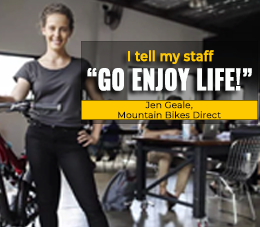












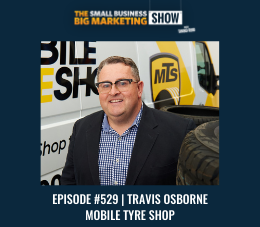
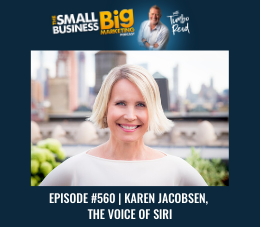
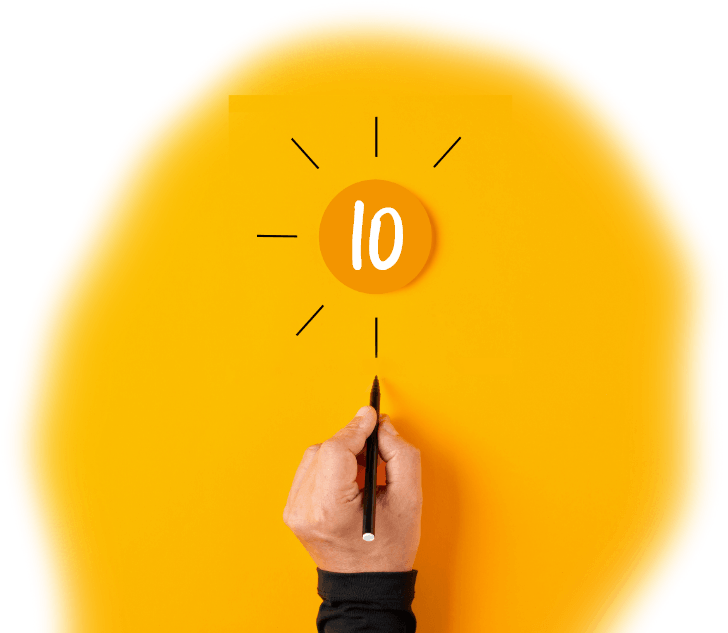
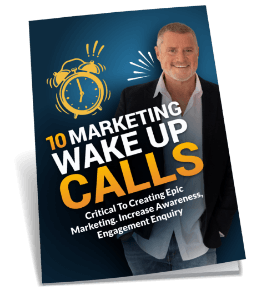
 Grab My 10 Marketing
Grab My 10 Marketing